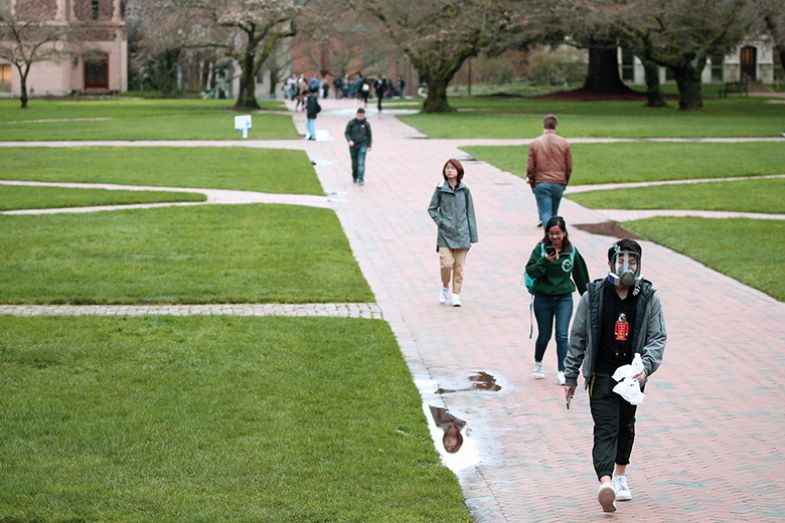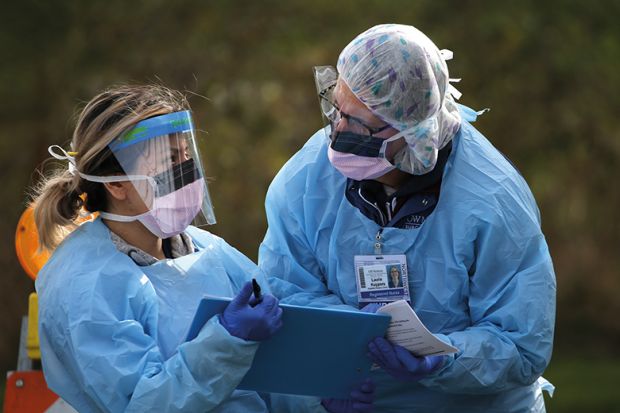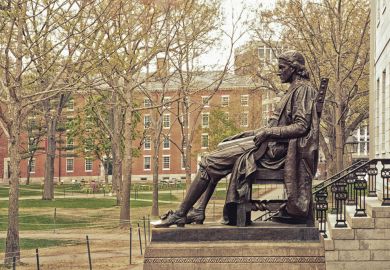My academic training is in clinical-community psychology, a background that I continue to draw on in many aspects of my work as a university president. For example, “crisis theory”, which grew out of studies of how communities have dealt with natural disasters such as fires and floods, tells us that the opportunity for the greatest change arises precisely during periods of turmoil, when equilibrium is thrown off-kilter. Without question, the Covid-19 pandemic, coupled with a broad awakening to deep-seated structural racism in our country, qualifies as such a period of crisis.
Higher education has been acutely disrupted by the pandemic and will face further threats from its long-term economic fallout. Yet this unprecedented period has also been a time of creativity, innovation, heroism and sacrifice, in which we are learning many lessons in a short time. Our opportunity is to seize this moment and make use of those lessons and innovations for the long term so that this crisis serves a higher purpose.
My institution, the University of Washington, was one of the first to suspend in-person instruction in favour of remote learning because, thanks to an ongoing flu study, Washington was the first US state where the novel coronavirus was found. In early March, we made all classes remote and asked all but essential personnel to work from home. At the time, we strenuously debated the risks and benefits of such extreme measures, not knowing how severe or widespread the virus would actually become.
I’m grateful that the guidance from our state, local and university public health experts provided a clear picture of those risks. As we now know, “better safe than sorry” was the right call and a cavalcade of other institutions ended up doing the same. When a crisis hits, as will inevitably happen again, we need to consult with knowledgeable experts, listen to and heed their advice and make difficult calls in the service of our community, no matter how inconvenient.
No doubt, it was a scramble for UW to move the final weeks of winter quarter classes and final exams online. We benefited enormously from the years of work that our Center for Teaching and Learning had already done to support alternative modes of instruction. The CTL was able to provide resources and best practices to faculty learning to conduct remote classes in real time. When the CTL was founded, we never imagined that it would be needed under such accelerated circumstances. But long before Covid-19 hit, we understood that teaching and pedagogy must develop in step with new technologies and evolving student demographics, needs and expectations, which helped us to avert disaster.
Once we determined that all of our spring quarter would be held remotely, we were able to convert all but 2.5 per cent of the roughly 7,000 courses normally offered to a remote format, including all but one of 42 art classes (the single exception being Advanced Glass Blowing). It has been inspiring to see our faculty rise to the challenge, developing new methods of instruction and assessment that optimise for remote learning. Just as inspiring are our students, who have shown their commitment to their degree programmes. Whatever hardships lie ahead for higher education, I remain optimistic that colleges and universities will continue to provide incredible value to students and that the magic that occurs in a classroom between teachers and students will survive all obstacles.

For research universities, particularly those with a healthcare enterprise, the pandemic has created additional challenges. University research is essential to our nation’s long-term health and prosperity, and university hospitals provide life-saving care to Covid-19 patients. I am incredibly proud of the work by UW’s healthcare providers and researchers to save lives, demystify the virus and curb the pandemic. Public universities are often at the mercy of state budget cuts, but when a novel virus strikes, we quickly see how public investment in research and healthcare pays off. At UW, our Population Health Initiative has already awarded more than $800,000 (£645,000) in grants to fund Covid-19 rapid response research. It’s critical that the public understand higher education’s important role in fighting the next health crisis and that legislators recognise that support for public universities is the ounce of prevention that staves off a pound of cure.
Currently, we are in the midst of preparing for the start of the next academic year, developing plans for bringing more faculty, staff and students safely back to campuses. We anticipate that the autumn term will be taught mostly through remote instruction, with a handful of in-person elements where social distancing is possible and hands-on learning is paramount. But with the virus still rampant across the country, we take nothing for granted. We’re listening to our public health experts and treating the return to campus as a “dial” that can be turned up or down. Although this makes planning more difficult, higher education will benefit in the long term from adopting a responsive and maximally flexible approach in which our decisions are informed by the conditions on the ground.
Higher education has always been a balance between the timely and the timeless. Inevitably, the pandemic and the extraordinary era it has ushered in will change higher education. At a time when climate change, increased migration and more fragile political structures may well make this an era of crisis, we will be pushed to become more timely, flexible and adaptable. Across the country, the crisis in effect created thousands of laboratories for new approaches to teaching, learning, assessment, research and discovery. Not all these experiments will be successes, but we will learn a lot about what works well in communities that are not defined by geography. Yet those “aha” moments in labs and classrooms, and the transmission of not just knowledge, but habits of heart and mind, are timeless, and they will still happen through relationships with mentors and peers, whether in person, six feet apart or through a computer screen.
Most critically, however, the pandemic has laid bare the severity and pervasiveness of inequality. Economic disparities that had less visible impact when students were all together have been thrown into sharp relief. Remote learning is disproportionately harder for students from low-income backgrounds who may have less comfortable spaces in which to learn, less access to technology and connectivity and different expectations for their economic contribution to the family. Racism and racial inequities are further amplified under these conditions. It’s incumbent on universities to recognise and help to mitigate those disadvantages, whether through technology loan programmes, financial support or other means. We must make this a priority even as we face potentially serious budget challenges.
Whatever long-term or even permanent changes result from this crisis, the importance of continued support for higher education remains imperative. We urgently need the young professionals, innovators and creators who emerge from our country’s degree programmes. Our ability to defeat this virus and to be prepared for a future one may depend on the research from university labs and hospitals. Learning the lessons of this pandemic will be crucial for the health of higher education and everyone it serves.
Ana Mari Cauce is president of the University of Washington.
The Times Higher Education World University Rankings 2021 will be published at 12pm BST on 2 September. The results will be exclusively revealed at the THE World Academic Summit, which will explore the challenges created or accelerated by the pandemic and identify new opportunities for progressive reform.
后记
Print headline: An ounce of prevention




